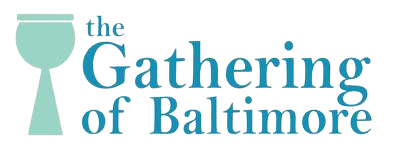How do you address an individual needs of students?
How do you address an individual needs of students?
How Can We Best Address the Learning Needs of Our Students?
- Principle I: Provide Multiple Means of Representation (the “what” of learning)
- Principle II: Provide Multiple Means of Action and Expression (the “how” of learning)
- Principle III: Provide Multiple Means of Engagement (the “why” of learning)
How do you identify student needs?
Identifying students’ needs
- observing the students’ behaviour;
- assessing the students, formally or informally, to determine their current knowledge, skills, and attitudes, and then noting the needs revealed by the assessment information;
- discussing issues with the students and asking them questions;
What are your aims teaching?
The ultimate goal of teaching is to promote learning. For the most part, learning takes place in many different circumstances and contexts. Although everyone is capable of learning, a student’s desire to learn is a vital to mastering new concepts, principles and skills.
What makes good teacher?
So what makes a good teacher?
- Good Teachers Are Strong Communicators.
- Good Teachers Listen Well.
- Good Teachers Focus on Collaboration.
- Good Teachers Are Adaptable.
- Good Teachers Are Engaging.
- Good Teachers Show Empathy.
- Good Teachers Have Patience.
- Good Teachers Share Best Practices.
What are the priorities of a teacher?
12 Priorities For The Modern Teacher
- Students.
- The quality of their teaching.
- The challenges and potential of assessment.
- Managing their classroom and engaging students.
- Lesson planning & curriculum.
- RTI, IEP, and IDEA.
- Language and other communication and cultural barriers.
- Using data to improve student learning.
What are students needs?
Student needs are deficits in specific skills that impede academic, physical, behavioural, and self help activities in daily living or social achievement. Student needs are determined by teachers and/or other professionals (sometimes through formal assessments) and in consultation with parents/guardians.
How do you differentiate to meet the needs of all learners?
Teachers who practice differentiation in the classroom may:
- Design lessons based on students’ learning styles.
- Group students by shared interest, topic, or ability for assignments.
- Assess students’ learning using formative assessment.
- Manage the classroom to create a safe and supportive environment.
How do you build relationships with students?
6 Easy Ways to Build Relationships with Your Students
- Spend 1-On-1 Time with a Student.
- Look for Something to Comment On.
- Develop an Interest in Their Interests.
- Share Your Stories.
- Have a Sense of Humor.
- Attend Student Events.
What supplies do teachers need most?
In order from most essential to least essential, based on over 250 teachers surveyed.
- Pencils. Pencils were the most mentioned must have classroom supply!
- Electric Pencil Sharpener.
- Dry Erase Markers.
- Colored Writing Utensils.
- Post-it Notes.
- Chart Paper.
- Individual Whiteboards/Dry Erase Boards for Students.
- Personal Laminator.
How do you build a good relationship with a teacher?
9 Ways to Build Strong Teacher Relationships with Colleagues
- Be Trustworthy. Few things damage a teacher’s relationship with their colleagues more than spilling secrets, gossiping, or talking smack about administrators.
- Listen.
- Ask Questions.
- Support Your Colleagues.
- Offer Your Help.
- Respect Boundaries.
- Be Real.
- Celebrate.
What are the different roles of a teacher?
Ten Roles for Teacher Leaders
- Resource Provider. Teachers help their colleagues by sharing instructional resources.
- Instructional Specialist. An instructional specialist helps colleagues implement effective teaching strategies.
- Curriculum Specialist.
- Classroom Supporter.
- Learning Facilitator.
- Mentor.
- School Leader.
- Data Coach.
How can a teacher get to know their students?
Share a positive observation of their student, and then ask parents/guardians what you should know about their child to best teach them is a good strategy for getting to know students. You might also consider having families fill out a hopes and goals questionnaire about their children for the school year.
What are the needs of the teacher?
Educators have consistently indicated that they need:
- Supportive school leadership.
- Engaged community and parents.
- A safe environment.
- Sufficient facilities.
- Enough time to plan and collaborate.
- High-quality professional development.
- An atmosphere of trust and respect.
- Effective school improvement teams.
